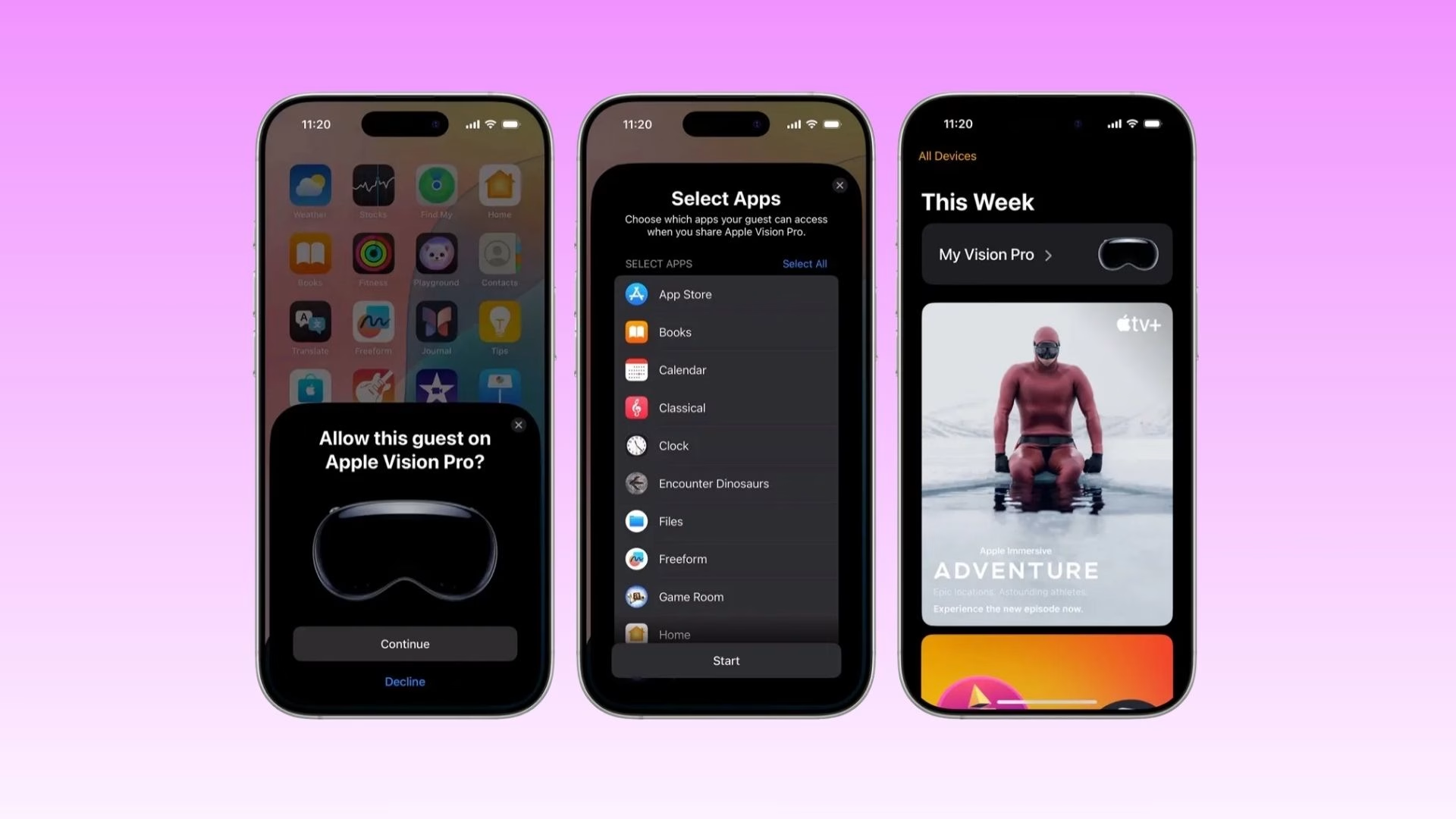The rumors, the beta tests, the whispers — they've all culminated in a major announcement: the Apple Vision Pro app is officially landing on iPad. This isn't just a minor update; it's a strategic maneuver set to redefine how users interact with spatial computing, bringing a slice of Vision Pro's immersive capabilities to a much broader audience. Get ready, because iPadOS 26.1 is rolling out soon, and with it, a significant expansion of Apple's spatial ecosystem.
Vision Pro App Arrives with iPadOS 26.1
What does this mean for your tablet? Well, if you own an iPad Pro (M1 chip or later), an iPad Air (5th generation onwards), a 10th-generation iPad, or an iPad mini (6th generation and newer), you're in luck. These devices, equipped with at least 4GB of RAM and an A12 Bionic chip or newer, are ready to welcome the future. The app itself is a relatively compact 1.2GB download, ensuring it won't hog too much precious storage. It's designed to leverage the iPad's larger screen real estate, supporting up to 4K resolution for virtual displays and a buttery-smooth 120Hz refresh rate on capable models. And for the creative types, Apple Pencil integration promises intuitive 3D annotations. It really speaks to Apple's ambition to push this tech widespread.
Bridging the Gap: Accessibility and Ecosystem Expansion
The arrival of the Apple Vision Pro app on iPad is a fascinating development for several reasons. Firstly, it significantly lowers the barrier to entry for experiencing spatial computing. While the full, untethered immersion of a Vision Pro headset remains unmatched (and carries a $3,499 price tag), the app allows users to preview and interact with spatial content directly on their iPad screens. Think of it as a gateway drug to spatial computing, letting people explore virtual environments and 3D models without committing to the full hardware investment.
This move also strategically strengthens Apple's ecosystem. As analyst reports from Counterpoint Research suggest, this could drive iPad sales up by 5-10% in the last quarter of 2025. Why? Because it positions the iPad as a "lite" spatial tool, effectively extending the Vision Pro's reach and making its features more accessible. Tim Cook himself highlighted this, stating that it's "about extending the Vision Pro ecosystem." It's a smart pivot, especially when reports hinted at a slowdown in Vision Pro hardware sales, a 15% year-over-year dip, according to IDC. This app could very well reignite interest.
A Glimpse into the Spatial Future: Features and User Reception
-
Spatial App Previews: Interact with Vision Pro apps like Freeform, manipulating 3D models and virtual objects directly on your iPad's display using intuitive gesture controls via the camera.
-
Headset Sync: If you do own a Vision Pro, your iPad can now seamlessly pair with it, acting as an extended display or a dynamic control hub.
-
AR Overlays: Thanks to LiDAR-equipped iPads, users can leverage real-time AR annotations, bringing digital elements into their physical surroundings.
The app's development has also focused on stability, with Apple reporting a 40% reduction in crashes since the beta stages. Plus, there's integration with Apple Intelligence, promising AI-driven spatial suggestions, like auto-generating virtual rooms. That's pretty cool, no?
Community reactions have been a mixed but mostly positive bag. Many users on Reddit and Twitter expressed genuine excitement, calling it a "game-changer for artists" and "a way to try Vision Pro features without dropping $3.5K." Still, some frustration lingered regarding compatibility, with older iPad models being left out. Concerns about battery drain during active use, estimated at 10-15%, were also noted during beta testing. Experts, like CNET's Scott Stein, lauded the app for bridging the gap between casual AR and professional spatial computing. While The Verge's Nilay Patel called it a "smart pivot for Apple," others pointed out it still "lacks the immersion of the real device," serving more as a teaser than a standalone tool.
Global Rollout and What's Next
The rollout of iPadOS 26.1 and the Vision Pro app will be global, but initially phased. Expect it first in the U.S., Canada, UK, Australia, and the EU. Regions like China and Japan will see a slightly delayed release, likely in November 2025, due to local regulatory approvals. Interestingly, in the EU, the app will comply with DMA regulations, allowing for sideloading of third-party spatial apps, which is a significant win for user choice.
This move underscores Apple's broader strategy to weave spatial computing into the fabric of its entire device ecosystem. It's not just about a niche, high-end headset; it's about making advanced AR and 3D interaction tools available to as many people as possible. By expanding the Vision Pro app to iPad, Apple isn't just selling more iPads; it's cultivating a larger audience ready for a spatial future. And that's something worth watching closely.
